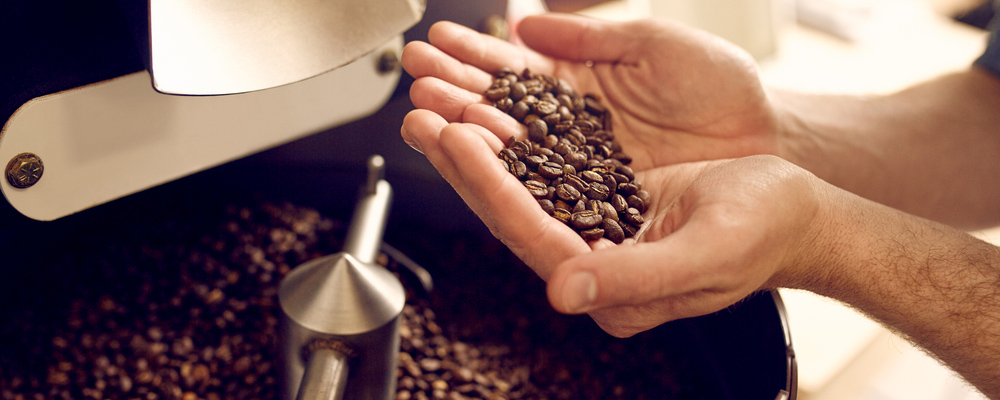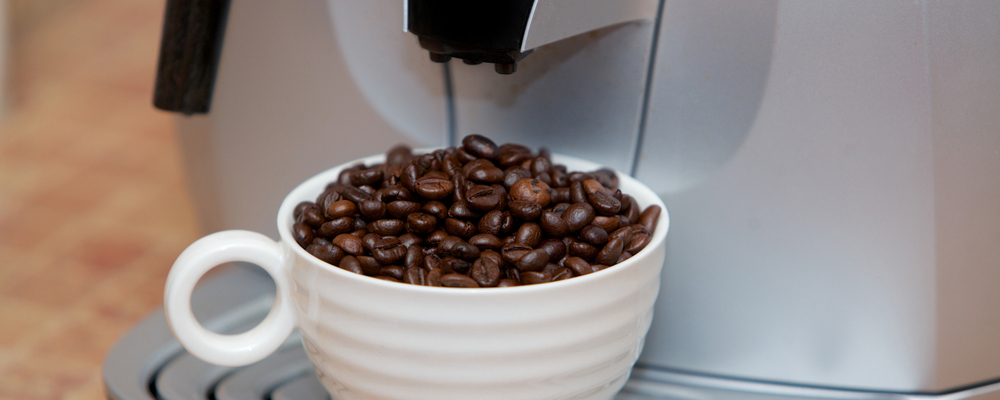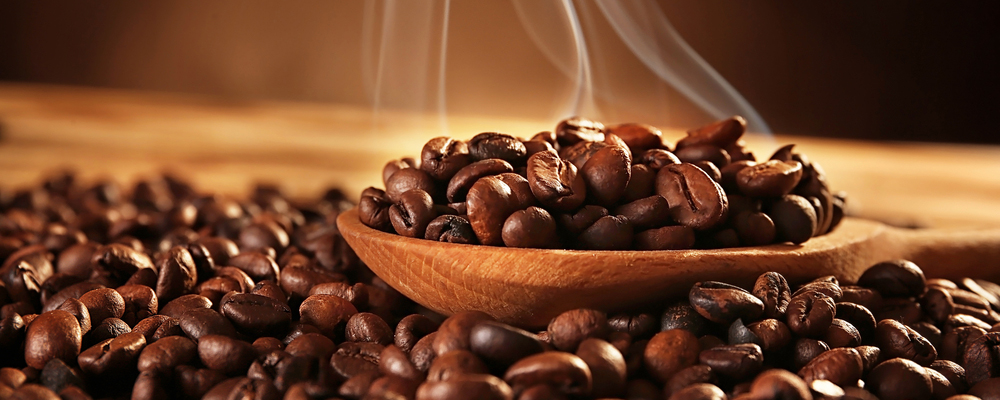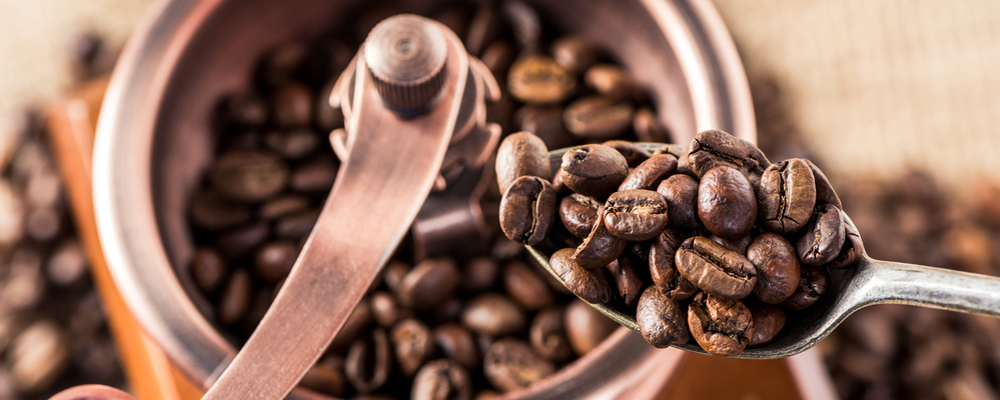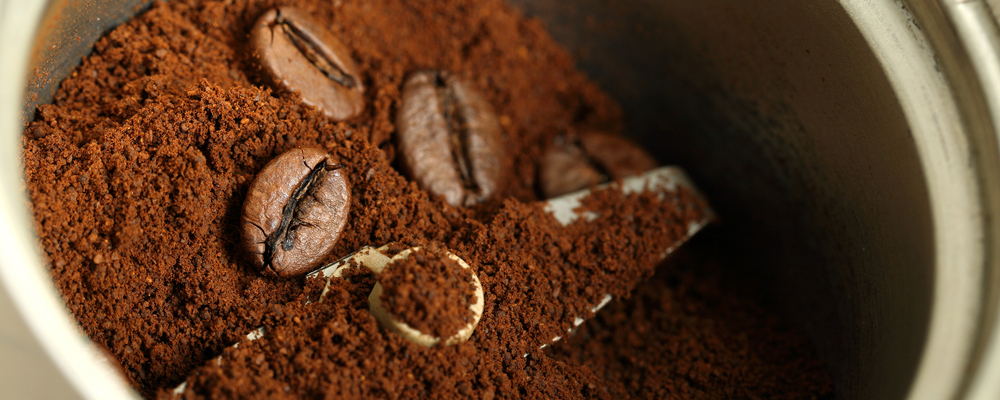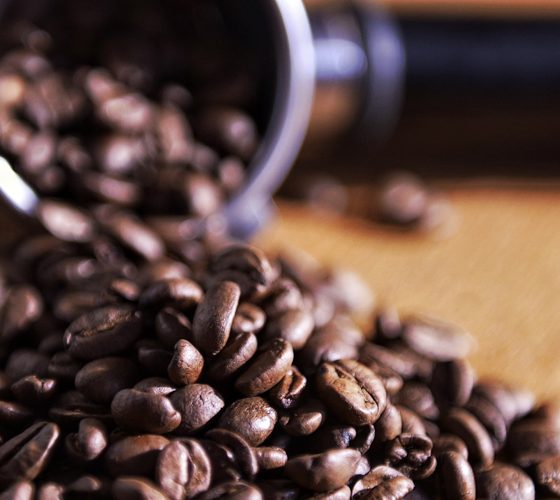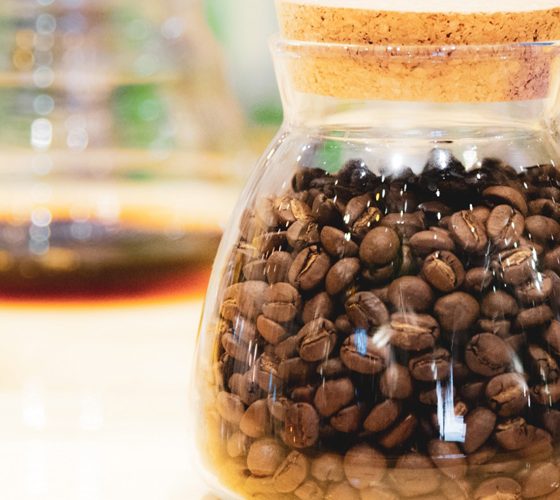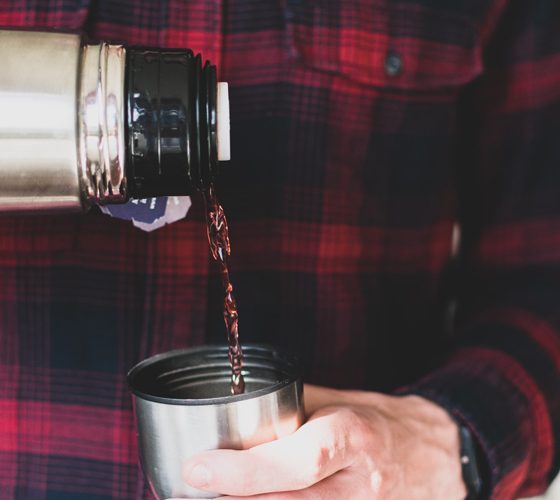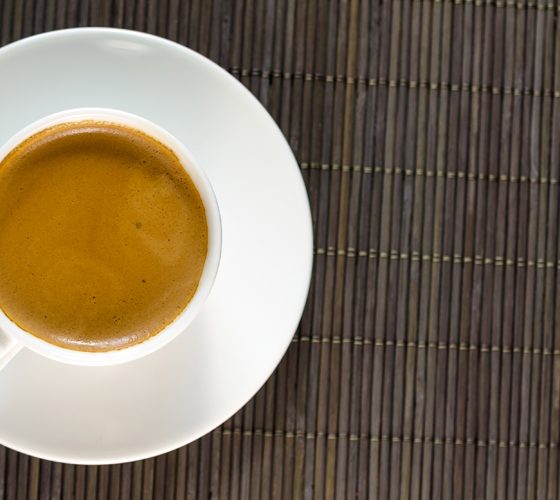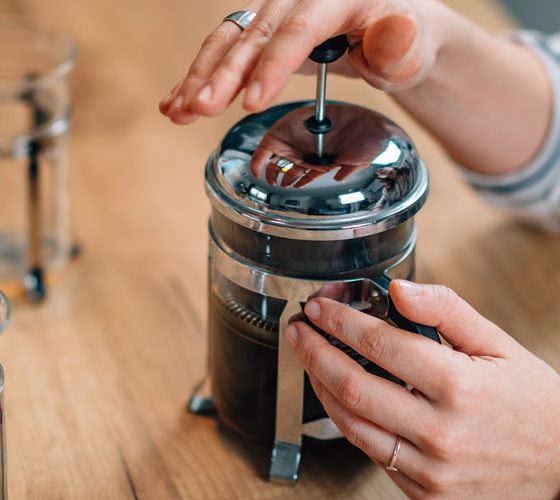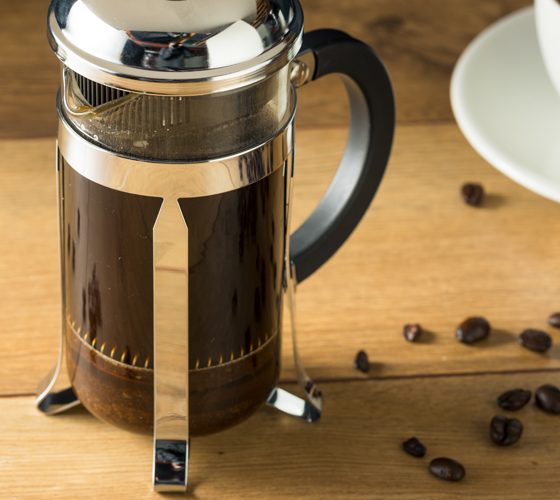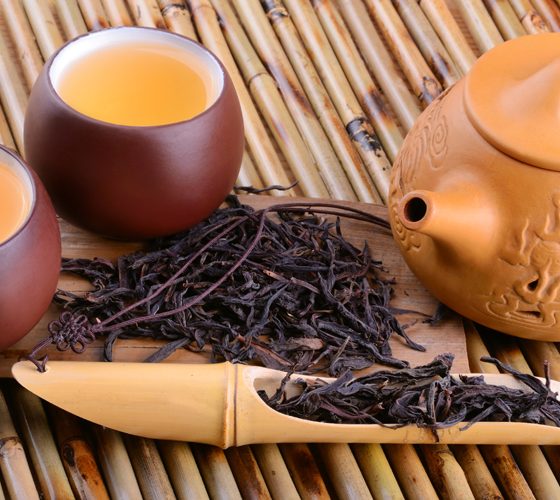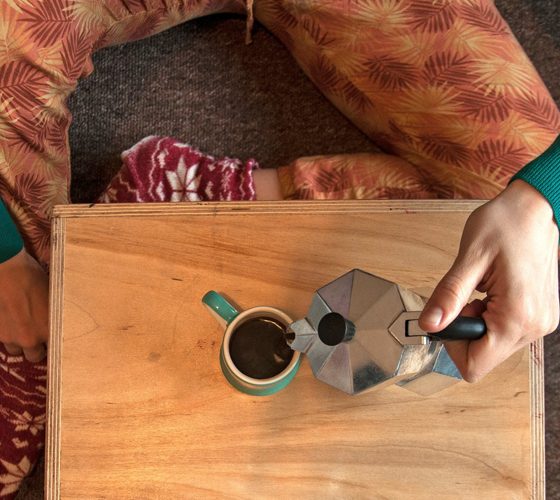When it comes to your morning pick-me-up, coffee is coffee, right? A surprising number of people hold the overall opinion that the caffeine hit is what matters, but espresso enthusiasts would beg to differ. A well-made cup of espresso has a much smoother texture and deeper flavor, truer to coffee’s rich aroma while boasting roughly the same jolt as a cup of coffee four times its volume.
Whether drunk in its purest form or blended with steamed milk or cream to create other beverages, high-quality espresso is a staple for the morning table.
The quality of your espresso starts with the espresso beans used to make it, but how do you tell which coffee beans make the best espresso?
View The Best Espresso Coffee Beans Below
1. Death Wish Whole Bean Coffee

These beans have several factors going for them. These coffee beans are fair trade and USDA certified organic, making them an ethical choice. Death Wish blends Arabica and Robusta beans to give you the best of both varieties. The espresso beans are dark roast and sold whole, so you can grind them fresh to your preferred consistency. What sets these apart as the best espresso beans is their slow roasting process, which achieves a dark roast while preserving their natural caffeine levels, producing a naturally potent blend.
Pros:
+ USDA Certified Organic
+ Fair Trade
+ Dark roasted blend of Arabica and Robusta beans.
+ Whole beans allow it to be fresh ground.
+ Retains more caffeine than other brands.
Why We Like It – We like this blend because, in addition to being an ethical and completely natural choice, it is well balanced and smooth. Additionally, it consistently produces a flavorful crema.
2. Coffee Bean Direct Italian Roast Espresso

Coffee beans from around the world come together in this blend of Italian roast espresso. Coffee Bean Direct sources beans from Central and South America, India, and Africa for their espresso blends. This is another brand that sells their beans whole to be freshly ground as you prepare your morning brew, but they also package them in foil-lined bags with a valve system built-in for peak freshness. Additionally, Italian roast is one of the darker roasts available, which means the sugars within the beans have caramelized to bring out their flavors.
Pros:
+ A blend of beans from several countries
+ Whole beans sold in valved, foil-lined bags
+ Italian roasted for excellent caramelization without burning
Why We Like It – Freshness is king when it comes to coffee. Coffee Bean Direct’s valved, foil-lined bags, in combination with whole beans to be freshly ground, ensure each cup is its best.
3. Verena Street Espresso Beans

Verena Street is a choice for those who want a full-bodied dark roast with ethical backing. Not only are Verena Street Espresso Beans certified kosher by the Orthodox Union, but they are sourced from Rainforest Alliance certified farms. What does that mean? The coffee plants are grown using farming methods designed to protect, not only the farmers and farm workers but the local environment and wildlife as well.
This is another offering where the 100% Arabica beans are sold whole. Additionally, the bags are relatively small, so those who save their highest quality coffee to savor over the weekends can do so without their beans going stale.
Pros:
+ Sustainably grown
+ Kosher certified
+ Dark roasted, whole beans
+ Available in small sizes for infrequent espresso drinkers
Why We Like It – We love a company that cares as much about the planet as we do, while still providing an excellent product.
4. Lavazza Caffe Espresso Whole Bean Coffee

This is a blend for those who prefer a medium roast. The coffee beans are 100% Arabica beans sourced from South America, Central America, and Africa. It is flavorful and smooth without the high intensity of darker blends. Because of the lighter roast, the coffee retains its more floral and fruity notes, and it works as well for drip coffee as espresso if coarsely ground.
While some might say dark roast is the only way to go for espresso, that is more personal taste than fact, and the Lavazza family ought to know. They have been crafting and perfecting their espresso blend for well over a century!
Pros:
+ Medium roast
+ Blend of Arabica beans from multiple countries
+ Floral and fruity notes
+ Long history of excellence
Why We Like It – This is a versatile, medium roasted coffee blend that works just as well for drip coffee as it does espresso, depending on the grind you choose.
5. Starbucks Espresso Blend Whole Bean Coffee

Starbucks has become associated with drinks more confection than coffee, but that does not mean they do not know their coffee beans. Without a strong espresso base, the coffee-based drinks that made the brand synonymous with coffee shops across America would not be the household name it is today.
Starbucks’ Espresso Roast consists of dark roasted Arabica beans. Their process produces coffee with an intense but sweet flavor, ideal for smooth espresso, while also pairing well with steamed milk to create the base of all their signature beverages.
This is yet another brand where the beans are sold whole, leaving the grind texture up to the buyer, so it can be adjusted to work with whichever brewing method you prefer.
Pros:
+ Dark roast
+ Bold but sweet flavor
+ Grind to suit your brewing method
Why We Like It – This blend is sweet and smooth as espresso but also pairs well with steamed milk for cappuccinos and lattes.
6. Eight O’Clock Whole Bean Coffee

This brand is one of the longest-running coffee companies in America, so they have had plenty of time to perfect their roasting technique. Their dark Italian espresso is made with Arabica beans. It’s a full-bodied dark roast with a sweet and bold flavor.
This is another certified kosher selection sold as whole beans. Grind it fine to use for a good cup of espresso, or choose a coarse grind to make it suitable for brewing an outstanding cup of coffee.
It’s sealed in a moderately sized two-pound bag. While the bag is not capable of an airtight closure after opening, it’s sized well for a moderate coffee drinker to finish before the beans go stale.
Pros:
+ Kosher certified
+ Full-bodied and bold flavor
+ 150 years experience perfecting their roast
Why We Like It – They are an American best seller for a reason, using their century and a half in business to perfect their Seattle roast.
7. Lavazza Super Crema Whole Bean Coffee Blend

Super Crema is an Italian-produced, medium roasted blend of Arabica and Robusta beans. This produces a light espresso with a rich crema and a sweet, nutty flavor. However, while it might have a slightly nutty flavor, that is the only thing nutty about the blend. This variety is roasted and packaged in a nut-free facility, making it a safe option for those with nut allergies.
Lavazza Super Crema is best suited for use with an espresso machine, though users have reported it can make a good cup of regular, drip coffee when the beans are prepared with a coarse grind.
Pros:
+ Produced in a nut-free facility
+ Medium roast
+ Blended for a creamy espresso
Why We Like It – Not only does Lavazza Super Crema make for a light and slightly nutty cup of espresso, we love that the company is conscious of food sensitivities, offering an option made in a nut-free facility.
8. JO ESPRESSO Whole Bean Espresso

This is another blend for those who are ethics and health-conscious. This medium dark roast produces an intense flavor purely on the beans themselves, with no added flavors. Not only is it sourced from fair trade certified sources, but the beans they use are non-GMO and organically grown.
It is made from 100% Arabica coffee beans, prepared by an award-winning team of roasters. They strive to ensure they produce coffee via a means that is sustainable and respectful of everyone working along the chain, from farm to table. Additionally, their entire process is inspected annually to ensure continued compliance with organic regulations.
Pros:
+ Fairtrade certified
+ USDA certified organic
+ Kosher certified
+ Medium dark roast
Why We Like It – This is a blend for those who want to know exactly what they are putting into their body. Not only is it kosher, but it’s certified organic, fair trade, and non-GMO.
9. Kicking Horse Coffee

This brand stands out for having several of the certifications that other blends on this list have, but then taking it a step further. In addition to being fair trade, kosher, and organic, Kicking Horse Coffee is made from Arabica beans that are shade-grown and sourced from Central and South America, Africa, and Indonesia.
Shade growing coffee beans is similar to vine ripening tomatoes in that it gives them more time to build up their natural sugars, thus resulting in a sweeter result. Plus, it has the added benefit of reducing soil erosion while retaining moisture.
Pros:
+ Fairtrade certified
+ USDA certified organic
+ Kosher certified
+ Medium dark roast
+ Beans sourced from four countries for a complex flavor profile
+ Shade grown for lower environmental impact and sweeter flavor
Why We Like It – Not only does Kicking Horse Coffee get a gold star for environmental awareness, but the fact that Kicking Horse’s beans are grown in multiple countries makes for a unique and complex flavor.
10. Intelligentsia Black Cat Classic Espresso

The last blend on the list differs from the others in two big ways.
First, they focus on single sourcing their beans for consistent results. What does this mean? Intelligentsia gets their beans from either a single farm or a few neighboring farms from a single region. Since growing methods influence the beans in subtle ways, the taste of beans from different regions can vary widely. By focusing on a few key farms in the same area, the company has a closer relationship with the growers and a dependable result.
Second, they took fair trade a step further into direct trade. They work directly with the growers providing their beans.
Pros:
+ Single sourced beans for consistent flavor
+ Direct trade
+ Medium roast
Why We Like It – If you value consistency of taste and quality, Intelligentsia Black Cat Classic Espresso is the blend for you. Single sourcing provides a dependable taste and finish.
Espresso Coffee Beans Buyer’s Guide
Which coffee beans make the best espresso?
As with many things, the answer to this depends on what you want out of your espresso. What defines the best espresso coffee for you? Do you prefer a sweeter, smooth taste, or are you looking for the biggest caffeine jolt possible? Is a rich, frothy crema layer a defining feature for your tastes, or are you more interested in making sure your coffee is ethically sourced and grown using sustainable methods?
Let’s start with the beans themselves. The majority of roast espresso is derived from two varieties of coffee: Arabica and Robusta. Arabica beans tend to have a milder taste with sweet, fruity notes, which can be expected with their higher acidity. Robusta tends toward a more intense flavor and much higher caffeine content. They are widely believed to be inferior to the Arabica beans; however, some varieties of Robusta are prized for the crema they can produce, combined with their intense flavor.
Robusta beans are less finicky to grow than Arabica beans. They mature faster and do not require the same high altitude as Arabica beans, in addition to bearing more fruit upon maturity. They are also less prone to pests, likely because of their higher caffeine content, and are heartier against inclement weather. These factors together mean coffees made from Robusta beans are less expensive than pure Arabica coffees, despite being grown in fewer countries.
Given all the brands and varieties available, in-store, and through sights like Amazon.com, it can become easy to get overwhelmed by overlap. If you run into this, consider other criteria that are important to you to separate the brands further.
Do you find it important to support companies who support the causes you find important? Koffee Kult would be a prime example of a brand in this category. Koffee Kult dark roast is an Arabica coffee suitable for getting good espresso results. The Koffee Kult brand stands apart because they only work with small, organic farms that not only pay their employees well but equitably. This means the women employed by the bean farms, who grow the beans that go into each batch of Koffee Kult dark roast, are paid the same fair wage as the men.
Kicking Horse is a brand with a similar background to Koffee Kult, but Kicking Horse focuses more heavily on environmental issues. While making sure the beans they get are fair trade, organic, and kosher, they take it a step further. Kicking Horse sources from farms that employ shade growing techniques which reduces deforestation while maintaining soil quality.
What is the best coffee beans for automatic espresso makers?
Using an automatic espresso maker adds a few other things to consider when looking for the best espresso beans. Having the grinder and an internal chute from the grinder to the brewing unit means picking coffee that will not damage the machine crucial.
An espresso bean, like any other part of a living thing, contains lipids, otherwise known as fats or oils, within its cells. Because of a coffee bean’s unique physiology, roasting causes these lipids to migrate to the outside of the cell wall. This is beneficial because they trap volatile compounds, responsible for coffee’s aroma and flavor within the cells. In short, it helps keep coffee from going stale and flavorless in a matter of days. However, if too much of the oils in your espresso bean have been expressed this way, it can cause the grounds to clump and clog up your machine. This can spoil your cup of espresso and damage the machine.
Generally, the darker the roast, the more oily the beans will be because the roasting process is directly responsible for this reaction. Darker roast coffee is produced by exposing the beans to higher temperatures for longer than lighter roasts. Your typical medium to dark roast coffee is safe for an automatic espresso machine. It’s the very dark varieties, ones with a glossy sheen of oil coating the beans, you want to stay away from using in your automatic espresso machine.
Additionally, avoid whole bean espresso coffee with added flavors. These flavors can add moisture or sticky sweeteners, which are just as likely to cause clumping and, thus, the same problem. If you absolutely must have your flavored espresso coffee, go for an option that is already ground for you, and only use your machine to brew the espresso. This will circumvent the issue, though you will need to clean the brewer thoroughly to remove any sticky residue left behind.
Can you make espresso with coffee beans?
Espresso beans are coffee beans, so all espresso is made with coffee beans. What makes coffee beans best suited to espresso is their roast and the consistency of their grind. You need a medium to dark roast and finely ground beans to use in espresso machines.
The espresso machines themselves are the key to making espresso. It’s the intensity of the heated water, in addition to the speed with which it is pressed through the finely ground espresso beans, that give the drink its distinctive taste and crema layer.
Roasting the beans causes a number of changes to occur with the coffee beans. The water within them evaporates. Several chemical reactions occur. The sugars within the beans caramelize. A build-up of pressure within the beans causes the oils to seep onto the outside of the beans, which has the beneficial effect of trapping the volatile compounds responsible for coffee’s taste and aroma inside. This is good because these compounds are called volatile for a reason: they are highly reactive. Without this occurring, these compounds would evaporate away, which would leave the resulting product lacking in both aroma and flavor.
As the name suggests, the crema layer results from the natural oils found within the beans themselves. The cell walls in coffee beans are unusually strong and trap these oils within the raw beans. Roasting helps break these cell walls down, but their innate strength prevents them from going completely soft. This is what allows the reaction mentioned earlier to occur and push the oils to the outside of the cell walls.
The longer the roasting process, the more this occurs, which is one reason espresso beans are usually dark roast coffee. However, it’s possible to get a rich crema layer with lighter blends using the correct grind consistency, a good espresso machine, and technique.
What makes good espresso beans?
Again, what makes the best espresso beans will vary due to an individual’s personal taste. When it comes to the best coffee beans to use when making your espresso, consider the bean species, source, roast, and the texture of the grind. Keep in mind, many of the best brands you can get on the market today offer whole bean options, so the grind texture is ultimately up to you if you have a grinder or an espresso machine with a built-in grinder.
Arabica beans are widely regarded to be the top choice for beans one can make. These beans, often originating from the mountainous regions of South America, tend to have a mild, relatively sweet flavor. Robusta beans are less picky about where they grow, resistant to pests, and have roughly twice the amount of caffeine in the coffee bean direct from the bush. However, their flavor is much more intense than their highland cousins, which causes many to dislike them.
Coffee is a notoriously picky crop, and like other crops with detailed needs, the environment in which they are grown has a profound impact on the end product. This is why one can experience a huge variety of flavors simply by purchasing coffee beans sourced from different countries or even regions within the same country. Some brands use this fact to source their coffee from multiple sources to create a more complex blend, and others focus on getting theirs from a single area for a more consistent bean.
This is another way Arabica and Robusta coffee differs. Robusta can be grown at lower altitudes, withstand the elements better, and stand up to pests better than Arabica. Robusta bushes also begin fruiting younger and produce more berries, which means a higher yield per bush. This heartiness may be responsible for the Robusta’s intense flavor, and higher caffeine content. It’s certainly the reason Robusta coffee is much less expensive than Arabica coffee.
The slower coffee is allowed to grow and ripen, the sweeter the bean. This occurs for the same reason any fruit or vegetable ripened on the vine will be more flavorful than one picked early and ripened post-harvest. Sugars and other compounds responsible for the flavor and aroma of fruit concentrate over time. This is to attract an animal to consume it and, thus, spread the seeds. The same is true of coffee, despite the fact we consume the seeds themselves instead of the fruit.
Farms that use growing techniques designed to allow the coffee to mature and ripen as slowly as possible, produce beans with a sweeter, fuller flavor. What techniques are those? Shade-grown coffee is a prime example. This method allows the berries, and the bean within each, to mature and ripen more slowly than bushes grown in the open.
This method has the added benefit of being better for the environment, as well. It makes use of the old forest growth instead of calling for its cutting. The shade and organic matter, provided by the sheltering trees, reduce the need for irrigation and additional fertilizers while improving erosion resistance.
The roasting method also has a profound impact on the end product. As mentioned above, coffee makes use of the plant’s seeds. Coffee is a crop we domesticated specifically for utilizing the pesticide it developed to protect itself from insects, i.e., caffeine, which is concentrated in seeds meant to survive ingestion. When the plant itself is working against your end goal, the processing is a key step. In fact, the roasting process and method is responsible for the enticing aroma, and flavor coffee lovers are after, which is concentrated into its purest form in an espresso shot.
Roasting causes the water inside the espresso bean to evaporate. This begins a complex chain of reactions that result in the volatile compounds responsible for much of coffee’s distinctive smell and taste, as well as caramelizing the sugars within the beans. Any experienced cook will tell you that caramelizing, whether it is in cooking fruits, vegetables, or meats, is responsible for most of the flavors we desire in the foods we crave. It’s no different with coffee or a good espresso shot.
The intense heat applied to the beans is also partly responsible for their distinctive shape because, as their cell walls soften, pressure builds up within the bean itself. This pressure, along with the evaporation of water from inside the bean, increases its porosity. What does this matter? A high porosity increases its solubility, and this makes it easier to brew. The higher the porosity and the higher the surface area, the stronger and faster your coffee will brew.
You may be thinking an extremely dark roast would be best given this, but roasting can certainly be taken too far. After a point, sugars will burn in place of caramelizing, and too many oils will be released. This can result in a bitter brew. Keeping this in mind, stick with a medium to dark coffee when choosing beans for espresso. Medium roasts are ideal for those who prefer a lighter, more acidic flavor with fruity undertones. Those who prefer a more full-bodied flavor should get dark beans to make your ideal cup of good espresso.
Lastly, the texture your beans are ground to also makes a big impact on each cup you get from your espresso machines. Espresso is made by forcing extremely hot water through compacted grounds under pressure. This allows you to brew a cup within seconds. To make a good espresso pull, you need grounds of a finer texture than you would want for drip coffee.
Why does it matter? To brew any type of coffee, you need the flavor compounds, some solids, and the oils released into the water used for brewing. Grind texture, the temperature of the water, and the time used for brewing, all play a part in this. The speed and pressure used to brew espresso are responsible for its distinct flavor, body, and the crema that categorize it. The faster a cup is brewed, the hotter the water and the smaller the grind needed to achieve the desired results.
It sounds counter-intuitive, but the smaller each individual ground, the larger the surface area per volume. This means more of the coffee bean is exposed to the water since it takes time for water to seep into larger particles. In short, a finer grind allows more flavor, aroma, and crema to be extracted from the beans in the few seconds it takes to get an espresso pull.
It’s also why you would not want to substitute beans ground for use in espresso in a drip machine. Too many of the coffee solids would dissolve into the water with the longer brew time, resulting in a bitter and almost burned tasting result.
The same thing can happen if you go too fine on the texture settings when grinding beans for espresso. To get the best out of your beans, start with a medium setting, and adjust down in small increments until you find the level you prefer to get a good espresso shot every time.
Take the time to peruse sites with different options, such as Amazon.com, to compare the varieties we broke down above and others for yourself before you decide on the best espresso beans for you to get. As you look, keep the factors discussed above that go into choosing a good roast espresso tailored to your taste, because, after all, the taste is in the mind of the individual.


